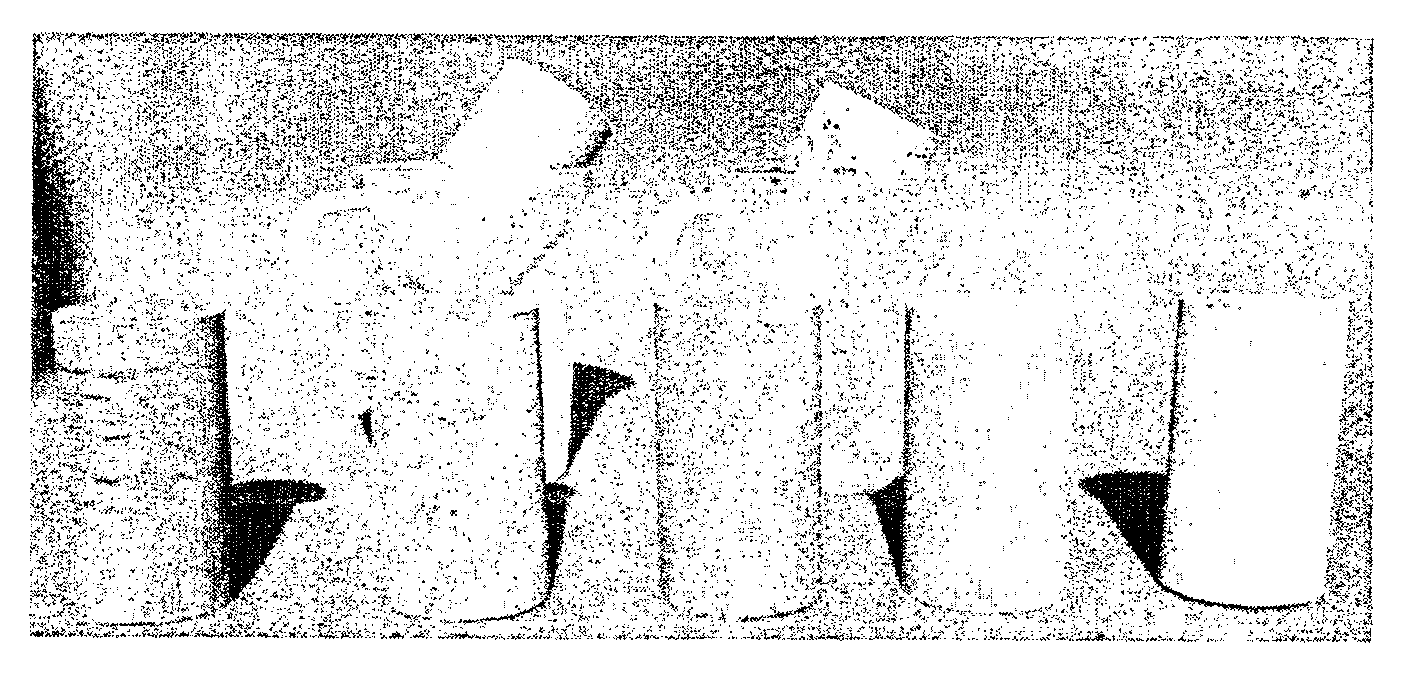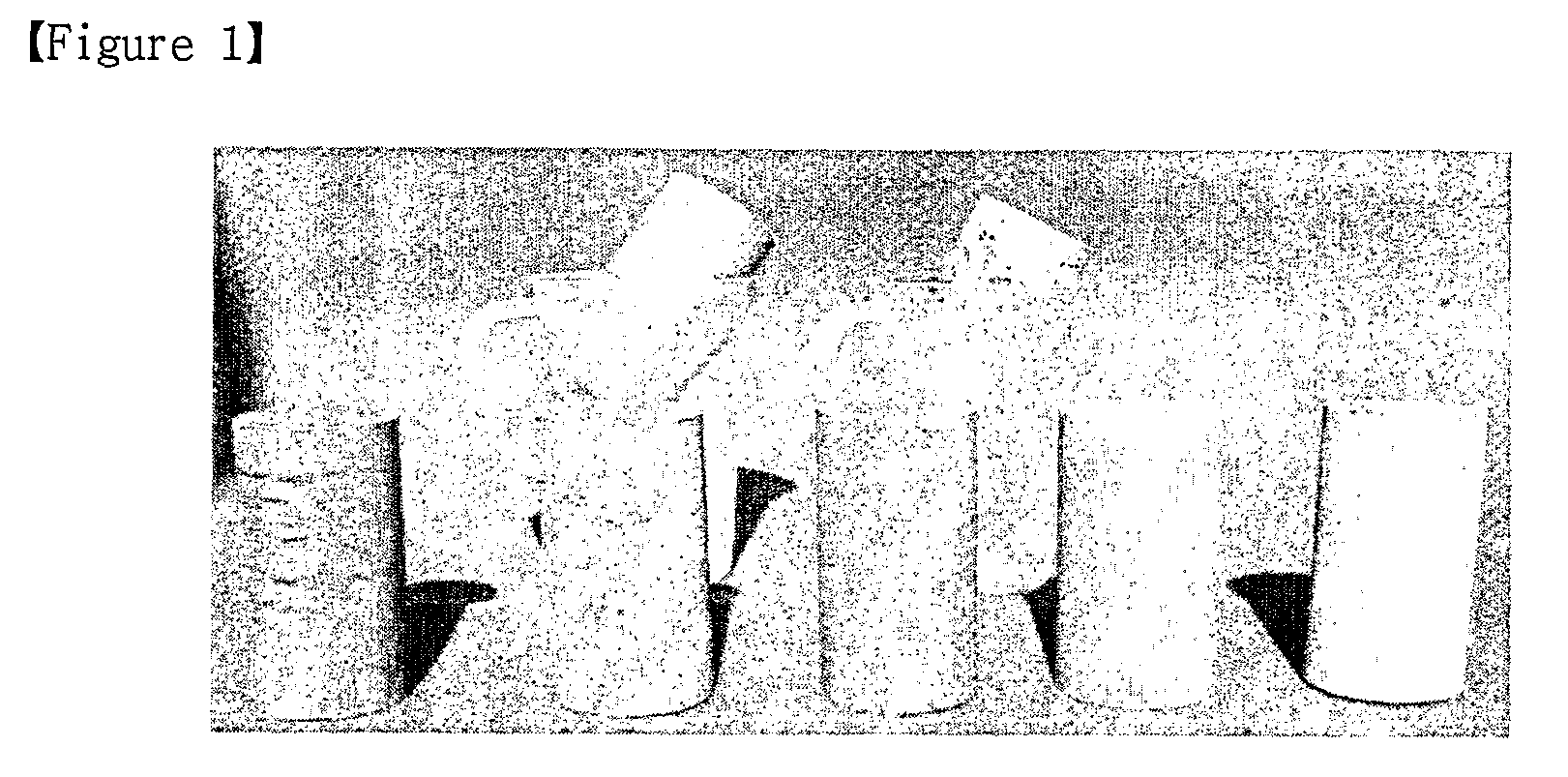Pulp Sludge Ash Composition for Producing Building Materials
a technology of building materials and sludge, which is applied in the field of pulp, can solve the problems of low industrial applicability, weakened bonding force between sodium silicate and metal oxides, and unsuitable pulp sludge itself to be discarded as landfills, etc., and achieves cost-efficient and time-efficient effects, excellent water resistance and strength
- Summary
- Abstract
- Description
- Claims
- Application Information
AI Technical Summary
Benefits of technology
Problems solved by technology
Method used
Image
Examples
example 1
[0045] First, 60 parts of pulp sludge ash were provided. Next, 85 parts of modified sodium silicate were prepared by mixing 1,500 g of sodium silicate with an aqueous acidic solution with stirring. The acidic solution was obtained by introducing 200 g of copper sulfate, 150 g of sodium sulfate, 1,000 g of caustic soda and 1,000 g of chrome alum into an agitator, each in the form of an aqueous solution, and agitating the materials for 30 minutes. Then, 60 parts of pulp sludge were mixed with 85 parts of the modified sodium silicate to obtain a cement-like composition.
[0046] The pulp sludge ash composition was injected into a cylindrical mold having a diameter of 50 mm and a depth of 100 mm. Then, a bar having a weight of 1 kg and a diameter of 10 mm was placed on the mold at different times, and determined the initial curing completion time, when the molded product showed no physical changes in its surface and permitted demolding and handling. The composition removed from the mold w...
example 2
[0047] First, 60 parts of pulp sludge ash were provided. Next, 85 parts of modified sodium silicate were prepared by adding 300 g of 10% aqueous sodium lauryl sulfate solution and 1,000 g of aqueous caustic soda to 1,000 g of sodium silicate, agitating the materials for 30 minutes and further adding 300 g of 10% aqueous sulfuric acid solution thereto and further agitating the materials. Then, 60 parts of pulp sludge were mixed with 85 parts of the modified sodium silicate to obtain a cement-like composition.
[0048] The composition obtained in this Example was tested in the same manner as described in the above Example 1. The results are shown in the following Table 1.
example 3
[0049] First, 60 parts of pulp sludge ash were provided. Next, 85 parts of modified sodium silicate were prepared by mixing 1,500 g of sodium silicate with an aqueous acidic solution with stirring. The acidic solution was obtained by introducing 200 g of copper sulfate, 150 g of sodium sulfate, 1,000 g of caustic soda and 1,000 g of chrome alum into an agitator, each in the form of an aqueous solution, and agitating the materials for 30 minutes. Further, 30 g of latex and 3 g of silicone oil were added to 1,000 g of the acidic solution. Then, 60 parts of pulp sludge were mixed with 85 parts of the modified sodium silicate to obtain a cement-like composition.
[0050] The composition obtained in this Example was tested in the same manner as described in the above Example 1. The results are shown in the following Table 1.
PUM
| Property | Measurement | Unit |
|---|---|---|
| time | aaaaa | aaaaa |
| pH | aaaaa | aaaaa |
| depth | aaaaa | aaaaa |
Abstract
Description
Claims
Application Information
 Login to View More
Login to View More - R&D
- Intellectual Property
- Life Sciences
- Materials
- Tech Scout
- Unparalleled Data Quality
- Higher Quality Content
- 60% Fewer Hallucinations
Browse by: Latest US Patents, China's latest patents, Technical Efficacy Thesaurus, Application Domain, Technology Topic, Popular Technical Reports.
© 2025 PatSnap. All rights reserved.Legal|Privacy policy|Modern Slavery Act Transparency Statement|Sitemap|About US| Contact US: help@patsnap.com



